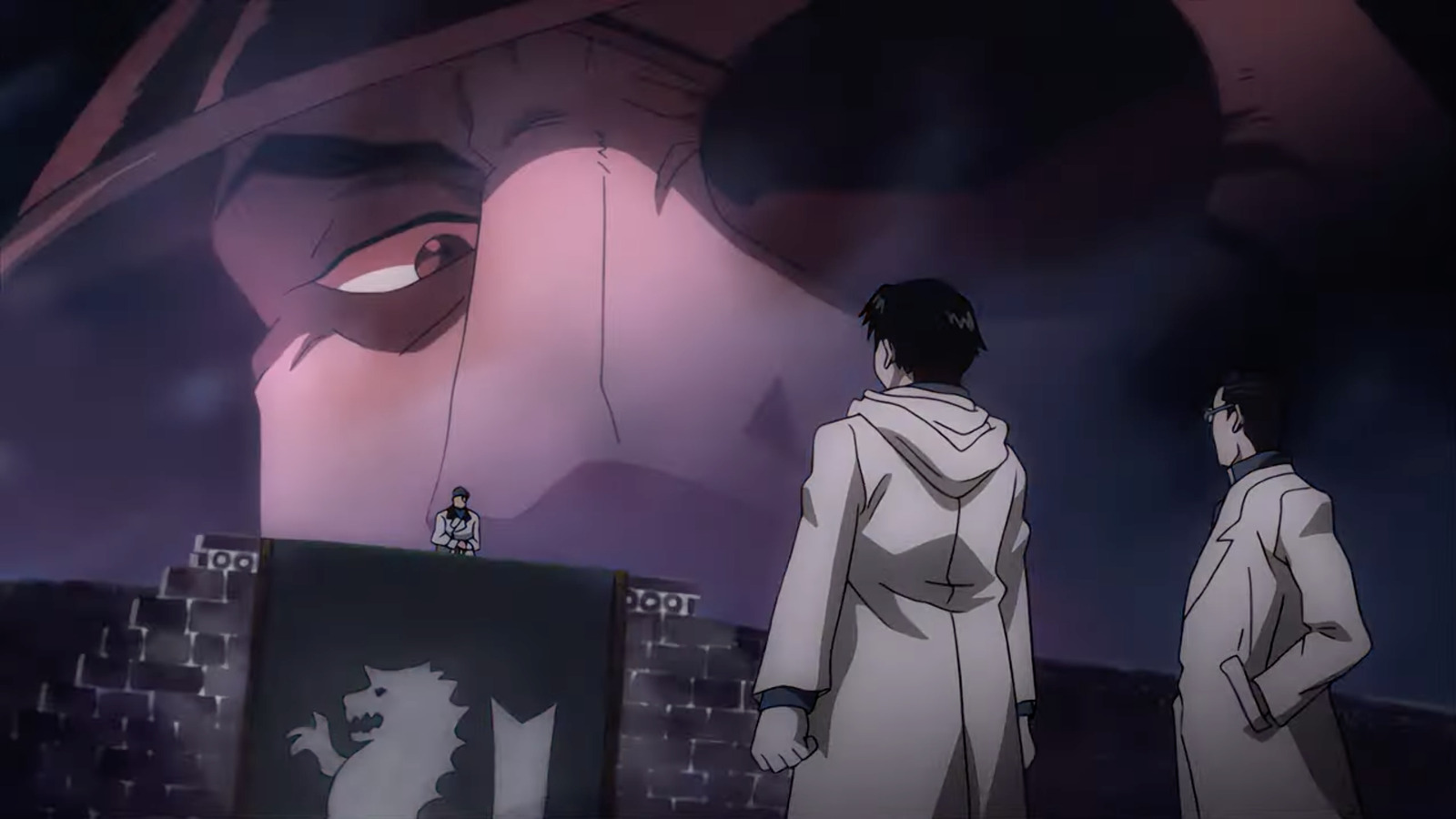Those are all scenes in the manga; the anime has the spine of the arc, but cuts off a lot of the meat. The manga has a longer build-up to the failed negotiation, where Colonel Basque Grand frags his superior (who refuses the surrender). There are also cut subplots, like Kimblee being assigned to kill the Rockbells (since they were helping the Ishvalans) before Scar beats him to it, or the nation Aurego aiding the Ishvalans to destabilize Amestris. In general, by spending less time with the war, it isn’t as affecting. Take this two page spread from Chapter 60, showing a collage of the carnage.
This is something a manga can do that an anime can’t; place multiple scenes from different times next to each other in a still image. The closest the anime comes is a montage of death and destruction in Ishval, but even that has almost the opposite effect; a montage overwhelms you with change, while a page forces you to linger.
The lessened violence can’t help but feel like letting the “good” guys off the hook. In “Brotherhood,” Hawkeye simply walks up to Mustang and Hughes. In the manga, an Ishvalan ambushes them but she snipes him. This is way better; it reinforces that nowhere is safe in war, that Mustang and Hughes are walking on stolen land, and makes Roy’s comment that Hawkeye has the eyes of a killer more meaningful.
Mustang blows up some buildings in “Brotherhood,” but he straight-up executes Ishvalan civilians in the manga. The last one he kills can feel Mustang’s hesitation, so they smile and say their last words: “I’ll never forgive you.” If there was one cut moment from the manga that needed to be in the anime, it’s that. It’s no wonder Arakawa refrained from giving Mustang a pure happy ending.
The flashbacks in the manga open with Scar and his brother discussing alchemy and the theory of positive and negative flow; the world gives back what we put into it. This transitions to the Rockbells helping the Ishvalans (positive flow), which in turns becomes Bradley signing the extermination order (negative flow). The flashback ends with Mustang and Hawkeye swearing they have a duty to change Amestris and protect as many lives as they can, while Scar swears he lives only for vengeance.
These moments of parallelism get lost in translation in “Brotherhood,” as does the manga’s ideas about how the entire war is about forces for good (alchemy, soldiers wanting to protect their people) being perverted for evil. The Ishvalan War arc embodies the larger themes of the story (the value of life, the need for community, etc.), but that feels diminished in “Brotherhood.”
“Fullmetal Alchemist: Brotherhood” saves one scene from volume 15 for episode 54, “Beyond The Inferno.” Mustang is about to execute Envy, who killed Hughes earlier in the series, but Hawkeye raises her gun to Roy, ready to fulfill a promise to shoot him should he walk off the right path. The episode cold opens with an Ishvalan War flashback, when Riza (burying an Ishvalan child) asks Roy to burn her back tattoo and destroy her father’s research, ensuring no-one can use flame alchemy like he did again. I don’t think the scene is better placed here, but it is an appropriate moment to remind us of how strong Mustang and Hawkeye’s bond is.

